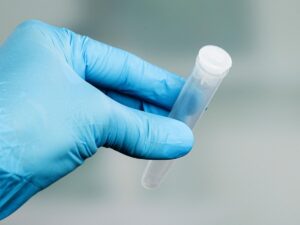When should I see a doctor about piles?
Piles are one of the most common diseases these days, and many people get confused. When should I see a doctor about piles? And that’s why we have decided to address it once at all.
It might be awkward to bring up the subject of rectal disorders such as hemorrhoids. However, it is projected that three out of every four Americans would have this condition at some point in their lives, with half of them experiencing it before 50.
Because hemorrhoids are such a joint disease, it’s no wonder that local drugstores are stocked with various remedies that claim to be effective. But what happens if over-the-counter medications are ineffective? Is it possible for medical therapy to address your condition and alleviate your discomfort?
Recognizing hemorrhoids
A hemorrhoid is a bulging and swelling vein that develops in the anorectal area of the body. Hemorrhoids are pretty similar to varicose veins in appearance, and they may occur anywhere in the body, from the lower rectum to the region just outside the anus.
Internal hemorrhoids develop inside your body, while external hemorrhoids form under the skin of your anal orifice. Internal hemorrhoids are more common than external hemorrhoids.
They may become exceedingly uncomfortable depending on where your hemorrhoids are located. You may feel heavy bleeding and slight discomfort, or you may not experience any symptoms. As is the case with many medical illnesses, receiving treatment for hemorrhoids as soon as possible might save you from unnecessary agony and pain.
When should I see a doctor about piles?

1. Bleeding when you have a bowel movement
Hemorrhoids are only one of the numerous underlying reasons for rectal bleeding that may occur. In most cases, bleeding from an internal hemorrhoid is bright red, occurs with bowel movements, produces no discomfort, and varies from a few drops to a few gallons.
However, it would help if you never assumed that rectal bleeding is caused by hemorrhoids. Consult with us if you’ve never been diagnosed with hemorrhoids before — or if you’ve observed a change in the features of the bleeding you’ve experienced in the past when suffering from hemorrhoids.
2. Noticing an anal bulge that retracts after passing stools
Anal prolapse (or pushing outside) occurs when internal hemorrhoids prolapse (or move out) your anal hole when bowling. It’s possible that the tissue will retract on its own at first or you’ll be able to push it back into place quickly. A prolapse, on the other hand, can worsen over time an
3. Feeling you can’t empty your stool completely
Eventually cause significant irritation, bleeding, itching, and pain as internal tissue becomes trapped outside of your anus due to the prolapse. Get treatment as soon as possible to avoid a prolapse from becoming worse.
3. Feeling you can’t empty your stool completely
It is possible to get the feeling of having feces caught at your anus if you have prolapsed internal hemorrhoids. Additionally, due to the displaced tissue, you may have difficulties cleansing yourself or notice a mucous discharge after you have had your bowel movement.
4. Experiencing anal discomfort or irritation
You do not have to suffer from hemorrhoid symptoms until the discomfort gets so bad that it interferes with your daily activities. We provide several nonsurgical therapies for hemorrhoids that are both effective and painless. These include:

- Rubber band ligation
- Rubber band ligation as a treatment for Sclerosis
A rubber band is wrapped around the hemorrhoidal tissue during rubber band ligation, preventing blood flow to the hemorrhoidal tissue. Within a few days, hemorrhoid shrivels up, dies, and falls off the patient’s body. We use Sclerosis to treat hemorrhoids. He injects a chemical solution into hemorrhoid, causing the vein to collapse and eventually wither away.
